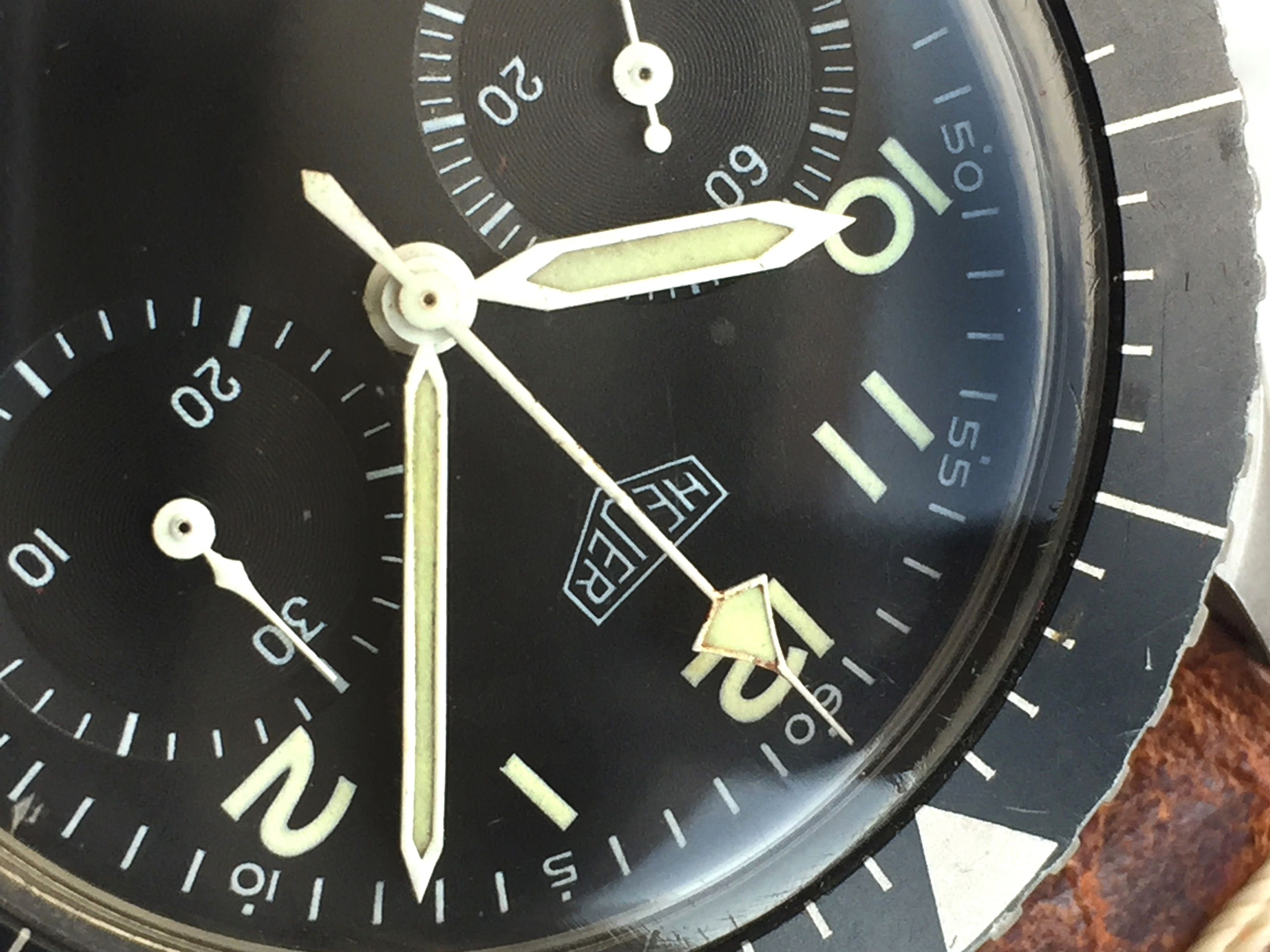There are military watches, and then there are military watches. The Heuer Bundeswehr Flyback Chronograph is the latter. Rolex Milsub, Omega SM300, they’re great and all, but smart money is on the German military issued wrist-tank with a legitimate complication. This pilot chronograph issued to the Luftwaffe in the late 1960s and 70s has become one of the most iconic military watches on the market.
To benefit from this limited guarantee the following conditions must be met: The international guarantee card, located in the guarantee booklet you received with your watch, must be enclosed with the watch when it is sent for repair and must be signed and dated at the time of purchase by an approved TAG Heuer retailer or, by a dedicated TAG Heuer Boutique; TAG Heuer will not. On the other hand, the authentic Tag Heuer watch has all of its numbers placed at the same level, without any sort of imperfections. Besides all of this, the fake watch’s number “150” also has two extra white spots: in the bottom right corner of the number “5” and inside the number “0”.
Trying to identify and categorize legitimate Heuer Bunds is quite the difficult task. Long story short, there are well over two-dozen dial variations to account for. To the untrained eye, many of the dials seem to be the same, but as it goes with collecting vintage watches in general, the devil is in the details. The most recognizable variants to collectors feature an encircled “3H” stamped on the dial, which is an abbreviation for hydrogen-3, a luminous material many of us know as tritium. As you go down the line of dial variations, the majority of the differences come down to logo and marking sizes – all this adds up to is a tricky market for the less experienced collectors.

Powering the Heuer Bund is a hand-wound flyback chronograph; the Valjoux 22, 222, or 230 had all been used depending on the time period it was produced or serviced. This leads to a peculiarity of the Bund. The case construction is such that the movement loads in through the front, and the screwed-in caseback attaches the bezel, which simultaneously secures the crystal. It’s likely that this design makes exchanges of movements, bezels and crystals quick and easy for the military contracted watchmakers – an important capability for watches taking on the rough daily life as a military pilot’s accessory.
The look of the Heuer Bund is that of utility. A clean, easy-to-read dial and a clearly marked 60 minute bezel are the most obvious characteristics. Upon going in for a closer look, one will note the PVD coated bezel provides excellent grip with its thick ridges. Combine that with pushers featuring long stems, and operating the Bund wearing gloves poses no issue. Tying it all together is the Bund strap. It’s essentially a two-piece strap with an extra flap of leather that attaches to the backside of the watch. The additional leather protects the pilot’s bare skin from temperature changes conducted through the watch case. The Bund is an awesome watch, but not so awesome you’d want the caseback serial number burned into your arm.
Cutting through all the details, what is it that makes the Bund worthy of the W4L Hall of Fame? It’s the legacy it has left behind. If it weren’t for the Heuer Bund, we may not have the Sinn we know today, or Kobold Watches, or Bell & Ross. These three brands have a direct lineage tracing back to the Bund. Sinn took over post-production servicing of Heuer Bunds for the German military, which led to the Sinn 156, the Bund’s Lemania 5100-powered successor. From there, Kobold and Bell & Ross received jumpstarts through the tutelage of Helmut Sinn.
Heuer Bundeswehr Serial Numbers For Sale
Successful bloodlines such as the Bund’s don’t happen without good reason. The Heuer Bundeswehr Flyback Chronograph holds the DNA of what a military watch should be: robust and reliable, legible and functional. And for us, this equates to possessing the DNA of a Wound For Life Hall of Fame timepiece.

Heuer Bundeswehr Serial Numbers Identification

For a more detailed breakdown of the dial variations, check out this research project done by Walter Manning.